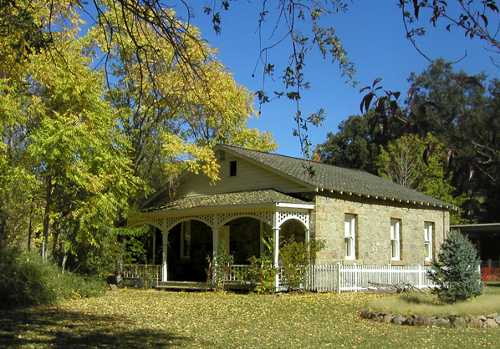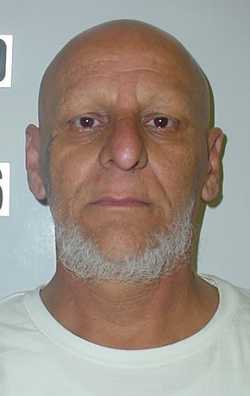- Lake County News Reports
- Posted On
The Veggie Girl: Asparagus, an elegant springtime treat

Whether it’s joining crab in an omelet, gracing an Easter platter or looking lanky on the grill, asparagus is a harbinger of spring.
When the first slender green stalks arrive at the local grocer, it feels winter is gone, whatever the weather outside.
If I had to choose just one word to describe asparagus, it would be elegant. However prepared, asparagus adds a touch of class to a plate just by being there.
This lovely vegetable has been cultivated for many thousands of years, being prized by the ancient Greeks, Egyptians and Romans.
Asparagus is pictured on an Egyptian frieze from 3,000 BC, and a recipe for cooking it is in the oldest extant cookbook, the De Re Coquinaria by Apicius, dating back to the third century.
While asparagus enjoyed great popularity in the ancient world, it fell out of favor during the Middle Ages. It regained its culinary status during the 17th century, when France’s King Louis XIV grew it in greenhouses specially built for that purpose.
This member of the lily family is said to have originated along the coastlines of Europe. It thrives in soils that are too salty for most weeds.
Asparagus has a treasure trove of nutrients in each low-calorie, low-sodium and high-fiber stalk. It’s a good source of vitamin B6, calcium, magnesium and zinc, and a very good source of protein, vitamin A, vitamin C, vitamin E, vitamin K, thiamin, riboflavin, rutin, niacin, folic acid, iron, phosphorus, potassium, copper, manganese and selenium.
It’s quite possible asparagus contains a greater variety of vitamins and minerals than any other vegetable.
Asparagus should be eaten when the shoots are young and the buds are not yet open. Otherwise shoots may be too strongly flavored and woody.
Generally asparagus is green; however, there is a purple variety. White asparagus is common in Europe, created by mounding dirt around the stalks as they grow to prevent photosynthesis. This makes the stalks sweeter and more tender than their green counterparts.
It is not necessary to peel asparagus, though some prefer to do this, especially on the lower thick portion of the stem. The thinnest stalks of asparagus are often the least tender, being less fleshy with more skin, the most fibrous part.
Asparagus, which is grown in sandy soil, should be washed well prior to using. Rather than trimming the stems with a knife, hold the ends of each stalk and bend it. The asparagus will snap at the point where the stem is no longer woody.
It’s hard to go wrong when asparagus is the star, even with the simplest of preparations. Roasting spears in the oven – or tossing them on the grill – with an olive oil drizzle and a bit of garlic is an amazingly flavorful dish. Lightly steamed asparagus with a sauce of fresh dill and mayonnaise or melted butter and a squeeze of butter is just divine.
You can splash a bit of good balsamic vinegar on warm asparagus spears, or sprinkle them with a variety of homemade vinaigrette dressings, such as Dijon mustard, blueberry or sesame-ginger, for some magic combinations.
Asparagus may be cooked till barely tender in salted water, tossed with fruity extra virgin olive oil and paired with friendly flavors as diverse as pine nuts, thin strips of prosciutto, fresh shaved Parmesan cheese or cocoa nibs
Asparagus does well when doused with the bright taste of lemon, and a perfect match for it is the classic lemony French butter sauce, beurre au citron, that’s both rich and pleasantly tart. Recipes for this may be found online, though my favorite version is the one found in Julia Child’s “Mastering the Art of French Cooking.”
Fresh and flavorful gremolata, a mixture of lemon zest, garlic and parsley, is a nice topping for sweet, nutty roasted asparagus.
Eggs and asparagus are a classic brunch match, and egg-based dishes such as quiche, frittatas, crepes and omelets are delicious when graced with asparagus.
Poached or hard-cooked eggs may be served atop asparagus, and when the spears are shortened to fit an English muffin, asparagus serves as an interesting replacement for ham in Eggs Benedict. The lemony Hollandaise sauce is perfect for them.
Seafood likes asparagus as much as eggs do, so foods such as crab or smoked salmon are welcome additions to egg dishes with asparagus. An array of interesting salads may be made with seafood and asparagus.
Creamy asparagus soup is among my favorites, and I’m a soup fanatic. Fresh lemon or lime juice for acidity and a bit of spiciness from cayenne may be added. These flavors shouldn’t overtake the asparagus, but merely provide a balanced back note. To intensify the flavor of the asparagus in the soup, save water from any asparagus cooked in your kitchen to make the stock.
There is no shortage of ideas for this wonderfully versatile veggie. Perhaps the most unique is a sandwich made with asparagus, thin slices of fresh Parmesan cheese and butter lettuce on crusty French bread.
Today’s recipe is one that utilizes cocoa nibs, little unsweetened nuggets of chocolate in pure form, prior to any processing. Nibs are the raw product from which cocoa butter, chocolate liquor and cocoa powder are extracted. They may be purchased at natural food or specialty stores.
This dish may be served as an appetizer or part of the main course. For my vegetarian readers, slivers of fresh Parmesan cheese may be substituted for the prosciutto. Enjoy!
Nibby asparagus with prosciutto
1 to 1 ½ pounds asparagus
2 tablespoons fruity extra virgin olive oil
2 tablespoons cocoa nibs, lightly crushed with rolling pin
2 to 3 thin slices prosciutto, trimmed of excess fat and sliced into long, slender shreds
Bring a pot of salted water to boil. Snap the woody ends from the asparagus, rinse and peel the stems (if you like). Cook the asparagus in boiling water just until barely tender and still bright green, three to five minutes.
Meanwhile, in a very small saucepan, warm the oil and crushed cocoa nibs over the lowest heat for two to three minutes to infuse the oil with the nibs’ flavor; do not simmer.
When the asparagus is ready, drain and spread out on layers of paper towels; let stand for a minute to absorb the excess moisture. Transfer the asparagus to a platter and toss with the crushed nibs, oil and prosciutto shreds.
Serve hot or warm as an elegant finger food or a plated first course.
Recipe courtesy of Bittersweet by Alice Medrich.
Esther Oertel, the “Veggie Girl,” is a culinary coach and educator and is passionate about local produce. Oertel teaches culinary classes at Chic Le Chef in Hidden Valley Lake, Calif., and The Kitchen Gallery in Lakeport, Calif., and gives private cooking lessons. She welcomes your questions and comments; e-mail her at This email address is being protected from spambots. You need JavaScript enabled to view it..
Follow Lake County News on Twitter at http://twitter.com/LakeCoNews , on Facebook at http://www.facebook.com/pages/Lake-County-News/143156775604?ref=mf and on YouTube at http://www.youtube.com/user/LakeCoNews .

 How to resolve AdBlock issue?
How to resolve AdBlock issue? 











